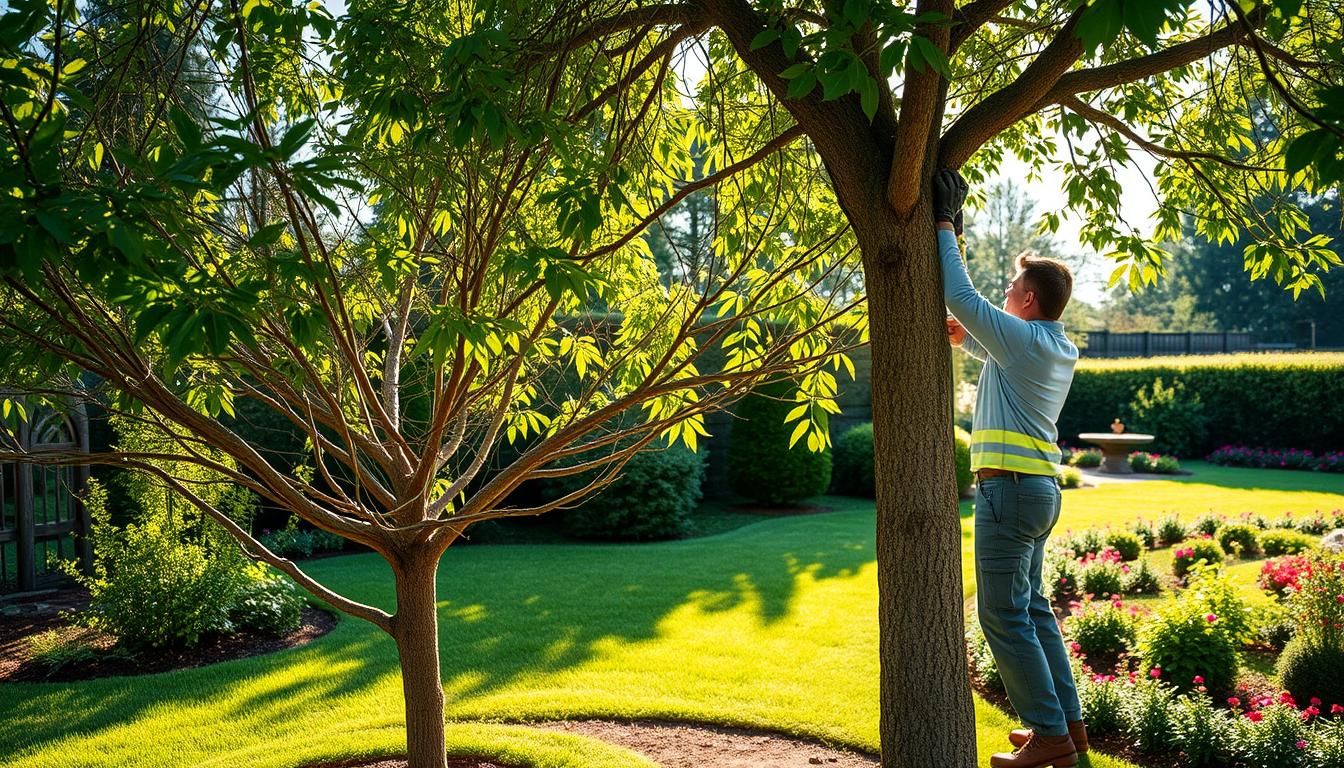Dead Wood Removal
Deadwooding: Understanding the Pros of Dead Wood Removal
Tree care is key in cities, and deadwooding is a big part of it. So, what is deadwooding? It’s when you take out dead, dying, or sick branches from trees. This important service helps keep trees healthy and safe.
Removing dead wood does more than just make trees look good. It also makes them stronger and safer. Arborists, through deadwooding, keep city green spaces beautiful and useful.
Arborists are vital for deadwooding. They know how to spot and safely cut out bad branches. Keeping up with tree care, like deadwooding, makes trees last longer and safer in cities.
Key Takeaways
- Deadwooding improves tree health and safety
- Professional arborists are essential for effective dead wood removal
- Regular tree maintenance prevents potential hazards
- Deadwooding enhances the aesthetic appeal of trees
- Removing dead branches promotes overall tree vitality
What is Deadwooding? Advantages of Dead Wood Removal
Deadwooding is a key part of tree care. It means cutting off dead, dying, or sick branches from trees. This makes trees healthier, safer, and look better. Let’s look at how it works, its benefits, and when to do it.
Understanding the Process of Dead Wood Removal
Removing dead trees starts with checking the tree’s health. Arborists look for branches that need to go. They use special tools to cut them off safely.
This helps air move better and lets more sunlight in. It’s good for the tree’s health.
Professional Arborist Techniques for Deadwooding
Arborists have special ways to deadwood trees. They cut branches close to the trunk or main branch. This keeps the healthy part safe.
For big branches, they use a three-cut method. This stops the bark from tearing. After cutting, they might grind the stump to get rid of it.
When to Schedule Dead Wood Removal Services
When to do deadwooding is important. Late winter or early spring is best. Trees are not growing leaves, making it easier to see dead branches.
If you see dead branches anytime, act fast. Quick removal stops dangers and keeps the tree healthy.
- Late winter/early spring: Best time for most trees
- Summer: Good for fast-growing species
- Fall: Avoid in areas prone to fungal diseases
Tree pruning and deadwooding are key for tree care. Removing dead wood strengthens the tree, lowers risks, and makes your yard look great.
Safety and Property Benefits of Professional Tree Maintenance
Professional tree care is key to keeping our cities safe and looking good. It includes tasks like deadwooding to stop trees from becoming a danger. Let’s see how this helps you and your community.
Preventing Hazardous Tree Conditions
Arborists can find and fix problems before they get worse. They cut out dead or weak branches to avoid falling limbs in storms. This makes your property safer and could even save lives.
Protecting Your Property Through Urban Forestry
Urban forestry is about taking care of trees in cities. Healthy trees make your property more valuable and make living there nicer. Regular care helps trees grow well around buildings and power lines.
Long-term Benefits of Regular Tree Care
Regular tree care makes trees live longer and healthier. They give more shade, clean the air, and help wildlife. By caring for your trees, you’re helping the whole ecosystem.
Cost Savings Through Preventive Maintenance
Tree care might seem like a cost, but it’s really a smart choice. It stops expensive emergencies or repairs later. Healthy trees save you money too.

Your blog is a treasure trove of valuable insights and thought-provoking commentary. Your dedication to your craft is evident in every word you write. Keep up the fantastic work!